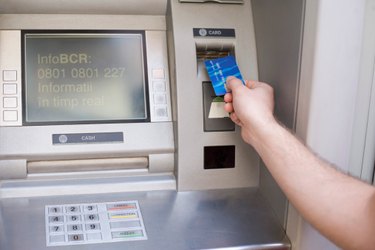
Computers in the banking sector have enhanced customer service and productivity regarding account management, while streamlining back-office activities. The biggest impact is in the area of competition. Small banking institutions can access the same technology as large banking institutions and, therefore, can compete with them more effectively for business.
Account Management
Video of the Day
In banking, activities start with banks automating customer accounts, which allows personnel to create, update and maintain customer records. Banking hardware and software have enhanced the accuracy of accounts that tellers and other banking personnel process. Banking software performs customer transactions through a centralized data record system. Account management is the genesis and backbone of all banking information systems.
Video of the Day
Hardware Technology
In the 1960s, bank hardware consisted of a mainframe and a punch card machine. Punch cards contained customer account information and were read into the main system by a punch card machine. Midrange and client/server hardware configurations, which are no larger than a minitower system, can run an entire bank in addition to receiving transactions from affiliated bank branches. These new hardware technologies can process more transactions than legacy banking hardware systems. Hardware technologies have enabled advances into wireless banking and telecommunications banking.
Electronic Transactions
Banking systems must perform electronic transactions. Direct deposit is an example of an electronic transaction. Computers processing electronic transactions must have hardware and software encryption capabilities to keep data from being compromised during a transmission. After the computer performs electronic transmissions, it transfer the information to the main computer system for processing and updating. Banks have extended electronic transaction capabilities through landline and cell phones, the Internet and ATMs.
Web-based Banking
Web-based banking systems use a dedicated server through a bank network system. An area of the banking system is partitioned for Internet applications. Web-based banking systems by law must include secure servers and authenticated certificates regarding transactions from the Federal Deposit Insurance Company and the Federal Reserve Board. Customers who choose to bank online can access their account through a web interface, which integrates with the main computer. A customer's credentials -- user ID and password -- pass through several checkpoints before entering the main system to perform a web-based transaction.